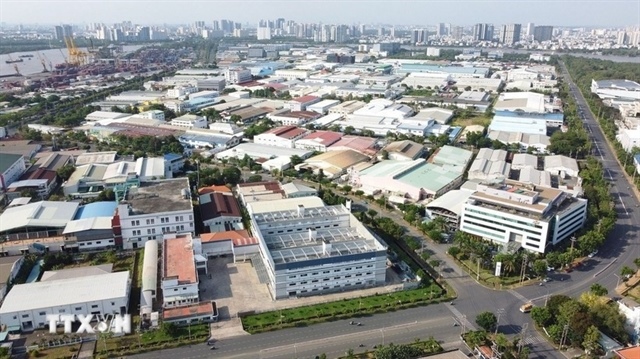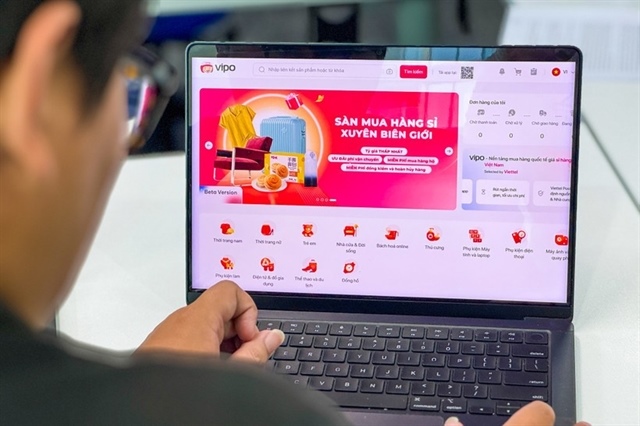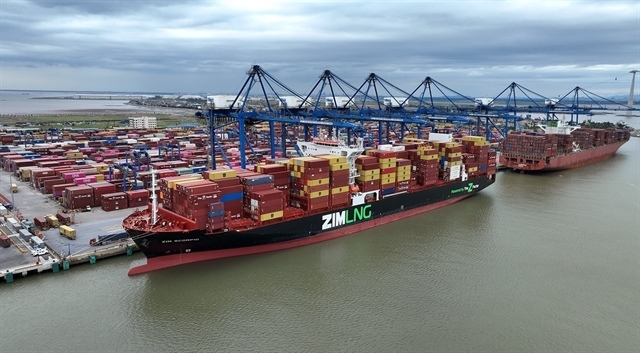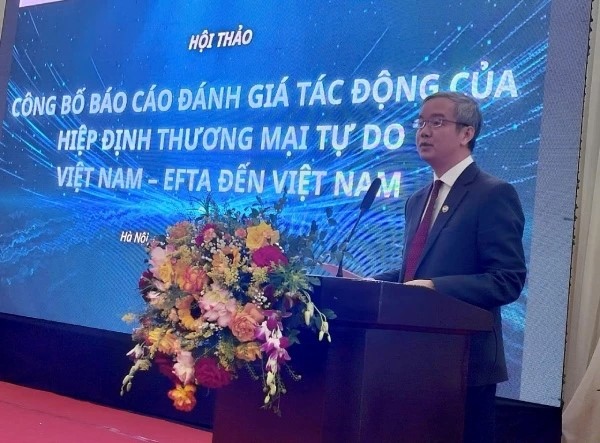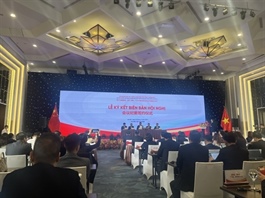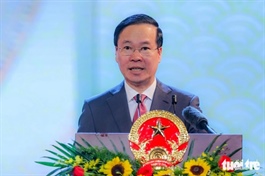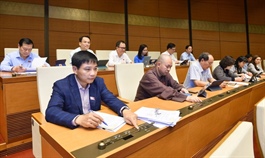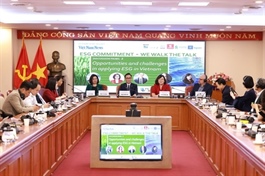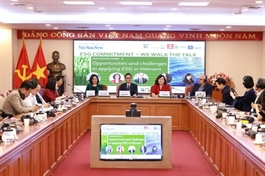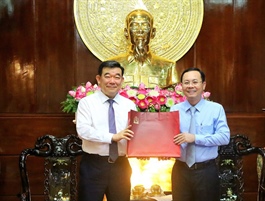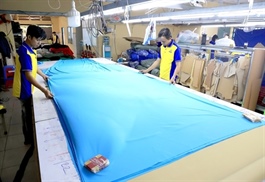Economic corridor cooperation facilitates Vietnam-China’s trade, investment
Economic corridor cooperation facilitates Vietnam-China’s trade, investment
The establishment of an official mechanism between the five provinces and cities of Vietnam and China is a crucial initiative that lays the groundwork for cooperation activities among localities.
Cooperation under the economic corridor has facilitated a conducive environment for enhanced trade and investment between Vietnam and China.
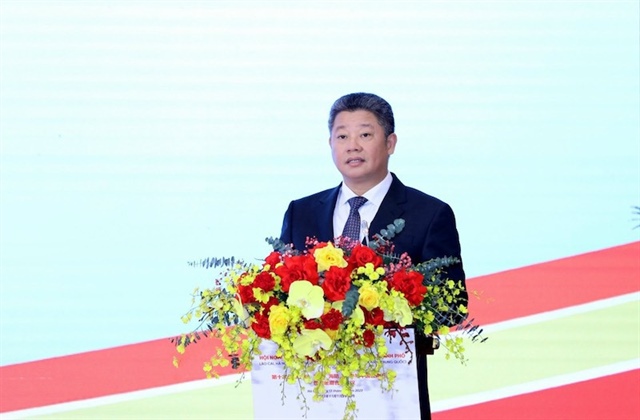
Vice Chairman of the Hanoi People's Committee Nguyen Manh Quyen. Photos: Thanh Hai/The Hanoi Times |
Vice Chairman of the Hanoi People’s Committee Nguyen Manh Quyen made the remarks at the 10th Vietnam-China Economic Corridor Cooperation Conference held in Hanoi today [November 13].
Presenting the outcomes of the 9th conference, Quyen highlighted that in 2023, with the Covid-19 pandemic under control, the amicable exchanges between Yunnan (China) and Vietnamese provinces and cities along the economic corridor have gradually resumed and strengthened.
In August, Deputy Prime Minister Tran Luu Quang led a delegation to Yunnan to attend the 7th South China Expo and the 27th Kunming International Trade Fair. The leaders of Hanoi, Haiphong, Quang Ninh, Lao Cai, and other provinces and cities accompanied the delegation, which visited various localities in Yunnan and achieved positive results.
“Economic corridor cooperation has provided a conducive environment for increased trade and investment between Vietnam and China,” said Quyen, adding measures to promote trade standardization and create a level playing field for businesses in both countries have strengthened business partnerships.
Numerous engagement activities have been organized organized to support the introduction of OCOP-standard products in Hanoi and northern provinces and cities, including those along the Vietnam-China economic corridor such as Quang Ninh and Haiphong.
Both sides collaborated in restoring and addressing difficulties in customs clearance of agricultural products and fresh fruits at the international land border gates II Kim Thanh (Lao Cai, Vietnam) - Bac Son (Hekou, China).
In addition, efforts were made to expand warehouse areas, gather yards, and goods inspection, and increase the labor force for loading and unloading. They also coordinated to operate a "priority channel" for customs clearance for agricultural products through the international road gates II Kim Thanh (Lao Cai, Vietnam) - Bac Son (Hekou, China), deploying a Minutes of Discussion on two-way transport of goods through these border gates.
Furthermore, there have been ongoing efforts to open pairs of bilateral border gates at Muong Khuong and Ban Vuoc, along with the coordinated approach to expedite the construction of a bridge over the Red River in Bat Xat, Vietnam and establish a pair of border markets in this region.
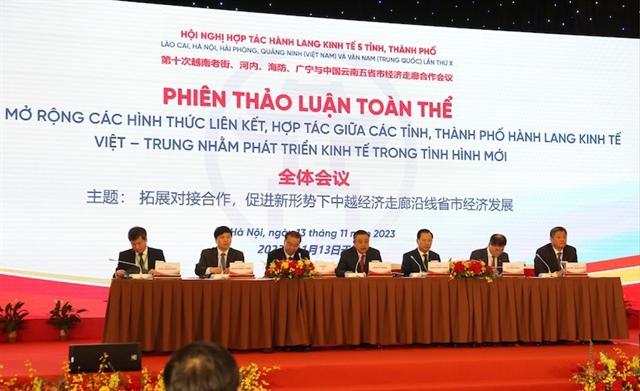
Overview of the discussion session. |
In terms of investment, Lao Cai province has attracted 11 FDI projects from China, with a total investment of $387.2 million. This includes five FDI projects from Yunnan with an investment of $377 million.
In the transportation sector, in November 2022, China and Vietnam jointly announced in the "Joint Statement on Strengthening and Deepening the China-Vietnam Comprehensive Strategic Cooperative Partnership" their agreement to complete the review of the Hanoi - Haiphong standard gauge railway planning. At the same time, the two sides focused on negotiating an agreement to promote the Hanoi - Lao Cai - Ha Khau railway link plan.
Cultural and sports cooperation and exchanges have been a positive aspect of the relationship between Lao Cai province (Vietnam) and Hekou (China) in recent years. Various activities, such as international bicycle racing tournaments, Mid-Autumn Festival poetry programs, book donations, youth friendship exchanges, and border people's friendship festivals, have promoted mutual understanding.
These activities contribute to strengthening understanding, friendship, and cooperation, opening up opportunities for collaboration in various fields, particularly in the socio-economic development of localities in both countries, said Quyen.
Both parties are working together to actively promote the connection, dissemination, and promotion of tourism images, regularly convening seminars and conferences to discuss sustainable tourism development solutions. They also organize tourism promotion through events such as the Vietnam-China International Trade Fair and the Kunming International Tourism Fair.
On March 28, 2023, the Hanoi Department of Tourism, in conjunction with the tourism departments of provinces and cities including Lao Cai, Quang Ninh, Haiphong, and Honghe County in Yunnan, hosted a promotional conference to re-launch the "Two Countries - Six Destinations" golden tourist route of China and Vietnam.
The report underscores that the establishment of an official cooperation mechanism between the five provinces and cities of Vietnam and China is a crucial initiative that lays the groundwork for diverse and rich exchanges, friendship, and cooperation activities between the localities.
Pushing for comprehensive cooperation in a new situation
Quyen suggested that amid a complex global situation, which poses difficulties and challenges for countries, including Vietnam and China, effective cooperation and maintaining sound friendly relations in the future are more relevant than ever.
The 10th Vietnam-China Economic Corridor Cooperation Conference is expected to feature several cooperation programs. These include collaborations between the Departments of Industry and Trade of Quang Ninh, Lao Cai, Haiphong, and Hanoi and the Department of Trade of Yunnan province, focusing on enhancing information exchange and promoting the export of strong local products. Both sides will participate in each other's annual trade fairs to expand, explore, and boost trade between the two regions.
Localities will continue to support the promotion and consumption of fruit products, agricultural goods, and OCOP commodities in the domestic market, fostering export and goods circulation.
Various forms of trade promotion programs will be organized with an emphasis on specific product groups (such as OCOP products, fruits, seafood, agricultural goods, and handicrafts), creating opportunities for local businesses and production units to participate.
In the transportation sector, localities propose that the two governments prioritize the prompt construction and operation of transport routes throughout the corridor, with a particular focus on the standard gauge railway to increase transport capacity and goods exchange. Cooperation in international road passenger transport will also be emphasized.
There will be intensified collaboration and linkages between businesses in the logistics sector within the economic corridor. Both sides will actively support and encourage businesses to invest in logistics to effectively utilize the traffic infrastructure on the Lao Cai - Hanoi - Haiphong - Ha Long - Van Don - Mong Cai expressway, thereby promoting transport infrastructure connectivity in border areas. Simplification of procedures at the Lao Cai (Vietnam) - Hekou (China) International Border Gate is proposed to facilitate the export of goods between the two countries and member localities within the Corridor.
Other considerations include the opening of an air route from Van Don International Airport to Truong Thuy Airport in Yunnan. This initiative, which includes both passenger and cargo transport, is envisioned to contribute to the growth of tourism and trade between the two regions and create an environment and opportunities for business investment cooperation within the business community.
Addressing the conference, Chairman of the Hanoi People's Committee Tran Sy Thanh underscored the honor of hosting the 10th Vietnam-China Economic Corridor Cooperation Conference.
He expressed his hope for the continued friendship between the two countries and expected that the conference would yield more results in the future, and contribute to the promotion and deepening of the global strategic cooperative partnership between Vietnam and China. Thanh also emphasized the importance of exploring new, practical, and effective cooperation opportunities.
“The conference will serve as a foundation for fostering closer, more effective, and more comprehensive cooperation activities between localities in the Economic Corridor and, more broadly, between Vietnam and China,” stressed Thanh.


